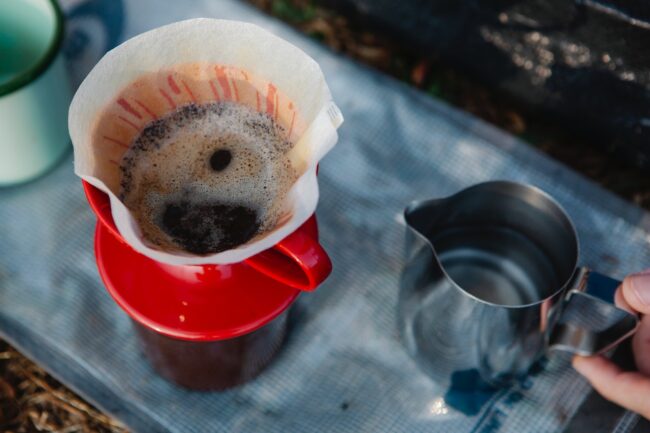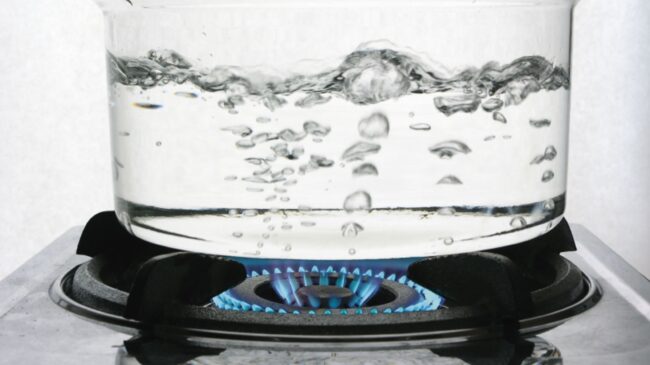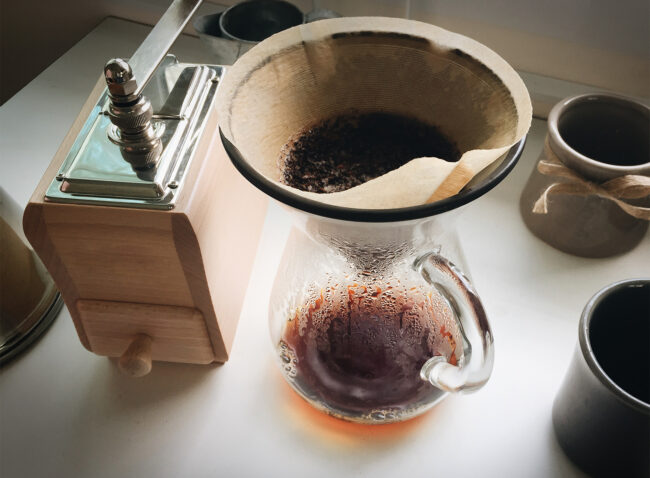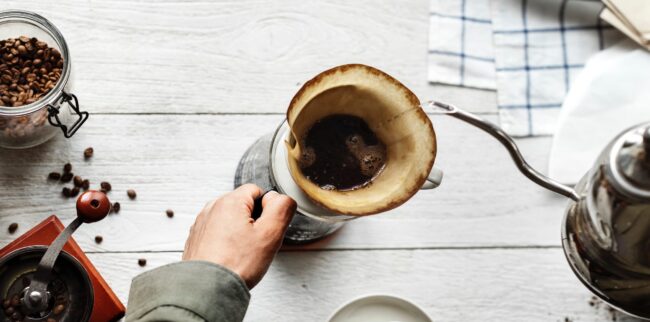Most of us love a good cup of coffee, especially in the morning. Brewing a perfect cup of delicious coffee is a subtle art. You may have wondered, why does a cup of this delicious goodness tastes so good when it is made by a professional barista and yet you can’t seem to nail that particular flavour at home, regardless of what it is that you drink.
Some people enjoy a nice cup of a French Press, some enjoy espresso, some drink filtered and so on. Even though all of these are coffee, all of them taste different and are brewed differently. What you need to understand is – there are four key aspects to brewing a perfect cup, regardless of what it is that you drink. Those four elements are beans, grind, dosage and water. All of these are equally important, even though it may not seem like it, but today, we’re going to focus on the latter – water. So, without further ado, let’s get started.
What Is The Water Ideal Temperature For Brewing?

Although this might seem like a question that you could answer easily, in reality, it’s not that simple. There are a few theories and ‘schools of thought’ when it comes to perfect water temperature. In general, an ideal brewing temperature is anywhere from 90-96 degrees Celsius or 195-205 degrees Fahrenheit. That is the commonly accepted answer.
Now, as we’ve said, there are three main theories regarding water temperature. Why is that the case? Well, let’s find out together.
1. Boiling Water

One could argue that this is one of the most recent theories, but in reality, many cultures have been brewing their coffee using boiling water for centuries now. With that in mind, many believe that you should use boiling or nearly boiling water is the ideal way to brew a cup and here’s why.
First of all, boiling water is at its hottest right then and there; and the hotter the water is, the more efficient it is when extracting flavours. Many argue that this is ideal and many prepare their coffee like this, as this method provides the strongest aroma – although a little bit on the bitter side of things.
Secondly, when you’re pouring hot water over a dripper, the water loses its temperature quite fast, due to the heat transfer, especially if you’re using a ceramic cone. For that reason, people tend to heat up the water a couple of extra degrees.
Finally, we are creatures of habit and we like consistency. When your water reaches boiling point, you know that it is at 100 degrees Celsius even if you don’t have a thermometer. That means that every time you brew a cup – it’ll taste the same.
2. One Temp To Rule Them All

When you ask someone about the ideal temperature for brewing, this is the answer you hope to hear – 93 degrees Celsius or 200 degrees Fahrenheit, an exact number. As you can tell, this one is right in the middle of the ‘ideal range’ and it is widely regarded as the perfect temperature for brewing a cup of coffee. Many argue that this one is deemed as the perfect temperature because it’s right on the nose (200°F) for the Americans. Then again, you could argue that for the first case because the boiling point of water is at 100°C, which is great for the rest of the world.
Be that as it may, it’s not by accident that this is considered a perfect brewing temperature. Water temperature dictates the flavour of the drink tremendously. When using ‘colder’ water, you get a bit more sour tasting drink, while the ‘hotter’ water makes the coffee slightly more bitter. The goal is to find that sweet spot between sour and bitter, so everyone can enjoy it.
In reality, there’s no real proof that 93°C is the perfect temperature for making coffee, as there’s no scientific evidence to back these claims up. However, it also doesn’t brew a bad batch, so, feel free to try this one out.
3. Every Brew For Itself

Now it’s time for the unpopular answer and the one no one is ever looking for – there is no ideal temperature. According to Friedcoffee.com, there is no perfect brewing temperature. The fact of the matter is, making coffee isn’t as simple as it might seem in the first place. Like we’ve said in the beginning – it’s a subtle art. There are many contributing factors, including the equipment you’re using and even the cups you’re drinking from.
Now, many experts agree that deciding on the water temperature should be done according to bean type, roast and brewing method. If we had to choose one of these approaches, we’d definitely choose this one. Because, the fact of the matter is – not every coffee bean is the same. We have different kinds, grown in different conditions and roasted in a different way. It would be ludicrous to believe that each and every one of them will make the best cup of coffee using the same water temperature.
According to CoffeeHow, some beans are easier to extract from, some are harder. As we’ve learned previously, hotter water makes for a better solvent, meaning, sometimes you have to heat things up a notch or two. The general rule of thumb is to use water closer to a boiling point when brewing very light roasts and a slightly colder one for medium or dark roasts.
Light roasts are very difficult to extract the flavours from, so you’ll need a helping hand in the form of nearly boiling hot water. Medium and dark roasts on the other hand are really easy to work with, so you can use the water even below 93°C (200°F) to make a cup of coffee. Since they’re easy to extract from, there’s a risk of brewing a very bitter cup if you use water that’s too hot.
Also, there’s a thing called ‘cold brewed espresso’. With this particular espresso, you’re using cold water for extraction and the process of making a cup can take upwards of 10 hours. When you think about it – it shouldn’t work. But it does. This coffee tastes great, although nothing like your regular shot of espresso.
So, in the end, it all comes down to attention to details and personal preference. If you do a little bit of research, you can learn a thing or two about coffee making, beans, brews, roasts and so on. Experiment a little bit and find what works best for you and don’t worry about the ‘rules’. Each cup is a different story and it’s up to you to tell it.
